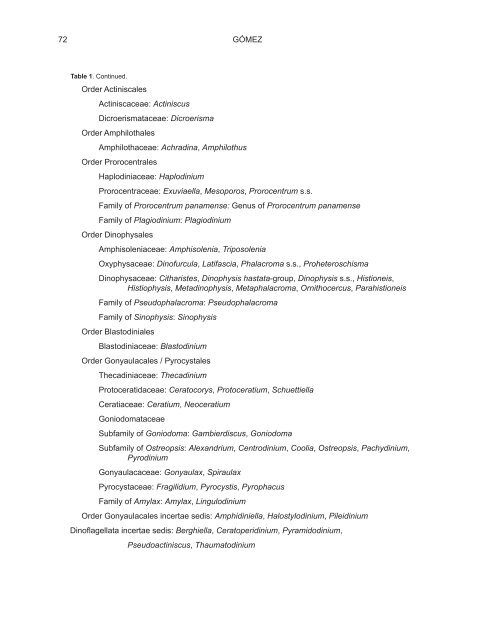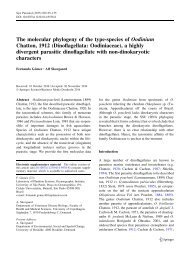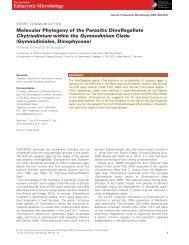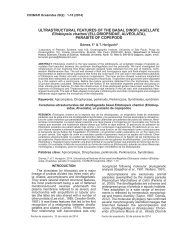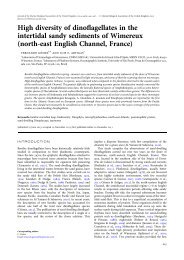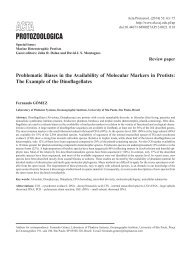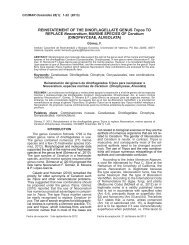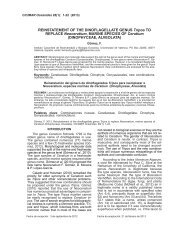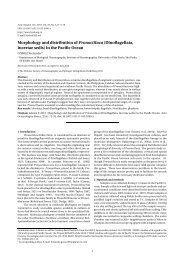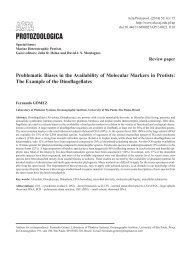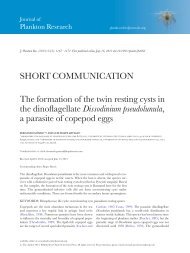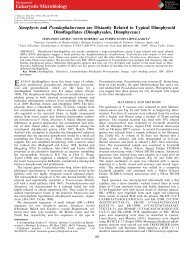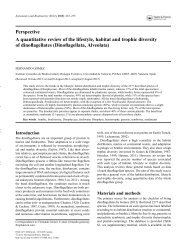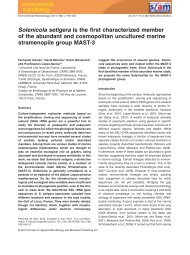A CHECKLIST AND CLASSIFICATION OF LIVING DINOFLAGELLATES (DINOFLAGELLATA, ALVEOLATA)
A checklist and classification of the extant dinoflagellates are given. Dinokaryotic dinoflagellates (including Noctilucales) comprised 2,294 species belonging to 238 genera. Dinoflagellates sensu lato (Ellobiopsea, Oxyrrhea, Syndinea and Dinokaryota) comprised 2,377 species belonging to 259 genera. The nomenclature of several taxa has been corrected according to the International Code of Botanical Nomenclature. When gene sequences were available, the species were classified following the Small and Large SubUnit rDNA (SSU and LSU rDNA) phylogenies. No taxonomical innovations are proposed herein. However, the checklist revealed that taxa distantly related to the type species of their genera would need to be placed in a new or another known genus. At present, the most extended molecular markers are unable to elucidate the interrelations between the classical orders, and the available sequences of other markers are still insufficient. The classification of the dinoflagellates remains unresolved, especially at the order level.
A checklist and classification of the extant dinoflagellates are given. Dinokaryotic dinoflagellates (including Noctilucales) comprised 2,294 species belonging to 238 genera. Dinoflagellates sensu lato (Ellobiopsea, Oxyrrhea, Syndinea and Dinokaryota) comprised 2,377 species belonging to 259 genera. The nomenclature of several taxa has been corrected according to the International Code of Botanical Nomenclature. When gene sequences were available, the species were classified following the Small and Large SubUnit rDNA (SSU and LSU rDNA) phylogenies. No taxonomical innovations are proposed herein. However, the checklist revealed that taxa distantly related to the type species of their genera would need to be placed in a new or another known genus. At present, the most extended molecular markers are unable to elucidate the interrelations between the classical orders, and the available sequences of other markers are still insufficient. The classification of the dinoflagellates remains unresolved, especially at the order level.
Create successful ePaper yourself
Turn your PDF publications into a flip-book with our unique Google optimized e-Paper software.
72 GÓMEZ<br />
Table 1. Continued.<br />
Order Actiniscales<br />
Actiniscaceae: Actiniscus<br />
Dicroerismataceae: Dicroerisma<br />
Order Amphilothales<br />
Amphilothaceae: Achradina, Amphilothus<br />
Order Prorocentrales<br />
Haplodiniaceae: Haplodinium<br />
Prorocentraceae: Exuviaella, Mesoporos, Prorocentrum s.s.<br />
Family of Prorocentrum panamense: Genus of Prorocentrum panamense<br />
Family of Plagiodinium: Plagiodinium<br />
Order Dinophysales<br />
Amphisoleniaceae: Amphisolenia, Triposolenia<br />
Oxyphysaceae: Dinofurcula, Latifascia, Phalacroma s.s., Proheteroschisma<br />
Dinophysaceae: Citharistes, Dinophysis hastata-group, Dinophysis s.s., Histioneis,<br />
Histiophysis, Metadinophysis, Metaphalacroma, Ornithocercus, Parahistioneis<br />
Family of Pseudophalacroma: Pseudophalacroma<br />
Family of Sinophysis: Sinophysis<br />
Order Blastodiniales<br />
Blastodiniaceae: Blastodinium<br />
Order Gonyaulacales / Pyrocystales<br />
Thecadiniaceae: Thecadinium<br />
Protoceratidaceae: Ceratocorys, Protoceratium, Schuettiella<br />
Ceratiaceae: Ceratium, Neoceratium<br />
Goniodomataceae<br />
Subfamily of Goniodoma: Gambierdiscus, Goniodoma<br />
Subfamily of Ostreopsis: Alexandrium, Centrodinium, Coolia, Ostreopsis, Pachydinium,<br />
Pyrodinium<br />
Gonyaulacaceae: Gonyaulax, Spiraulax<br />
Pyrocystaceae: Fragilidium, Pyrocystis, Pyrophacus<br />
Family of Amylax: Amylax, Lingulodinium<br />
Order Gonyaulacales incertae sedis: Amphidiniella, Halostylodinium, Pileidinium<br />
Dinoflagellata incertae sedis: Berghiella, Ceratoperidinium, Pyramidodinium,<br />
Pseudoactiniscus, Thaumatodinium


